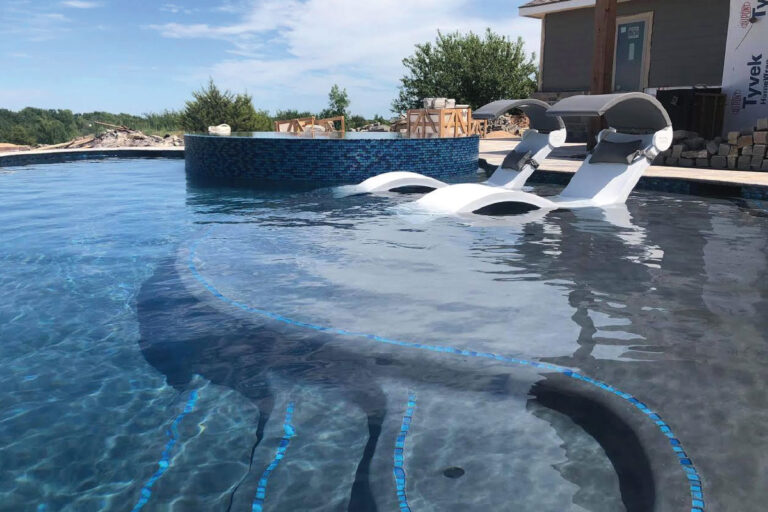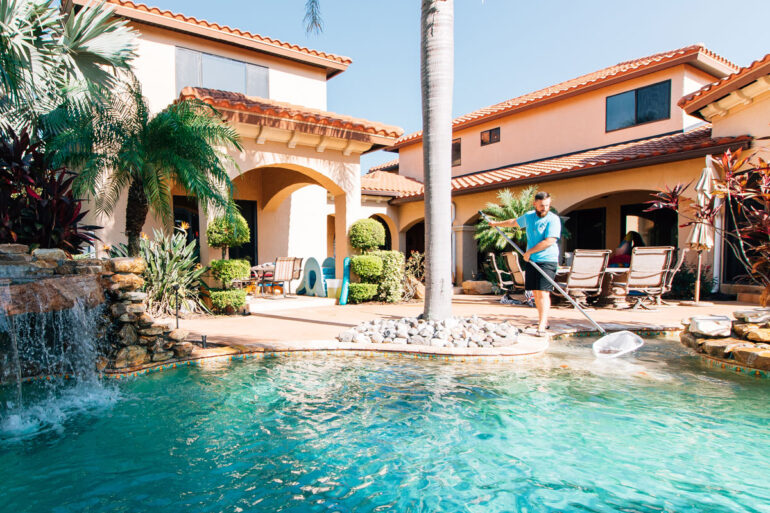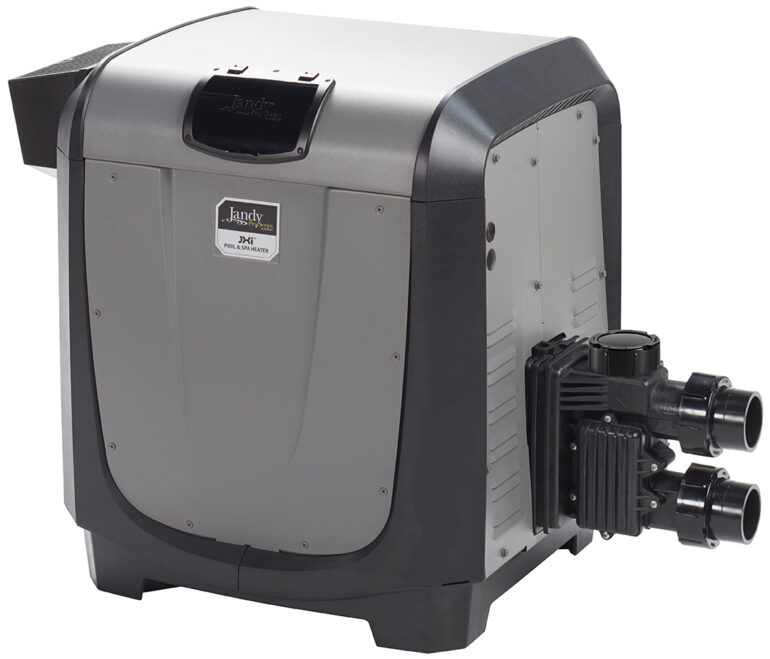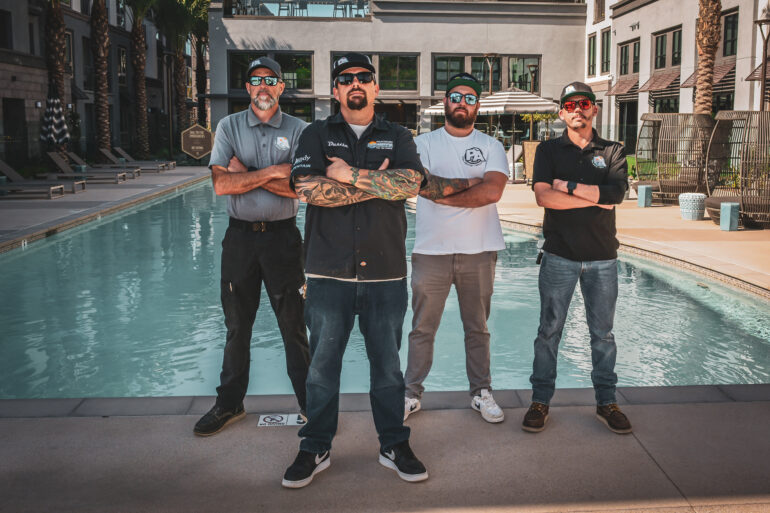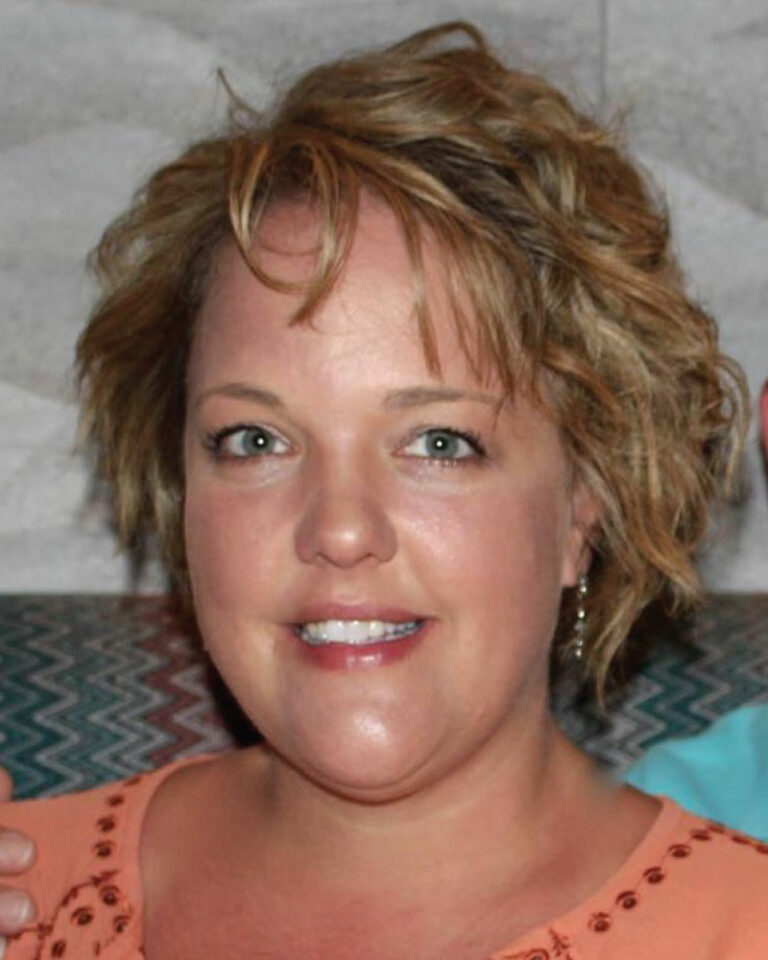How I Built This
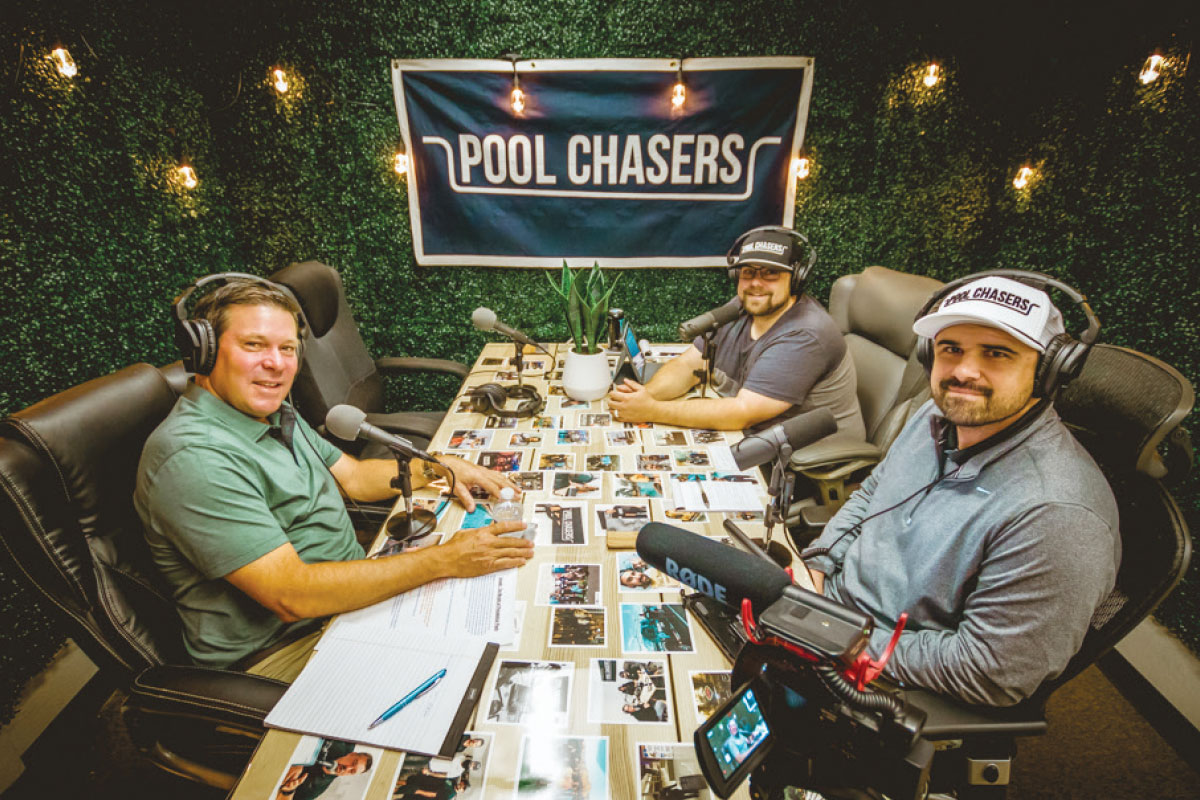
Part 1 of 2
For self-starters who’ve already launched a small business, it may not be surprising that the entrepreneurial bug eventually bites again. In part one of a two-part series, we look at three pool industry ventures that, born of necessity, changed the lives of those who dared to try something new.
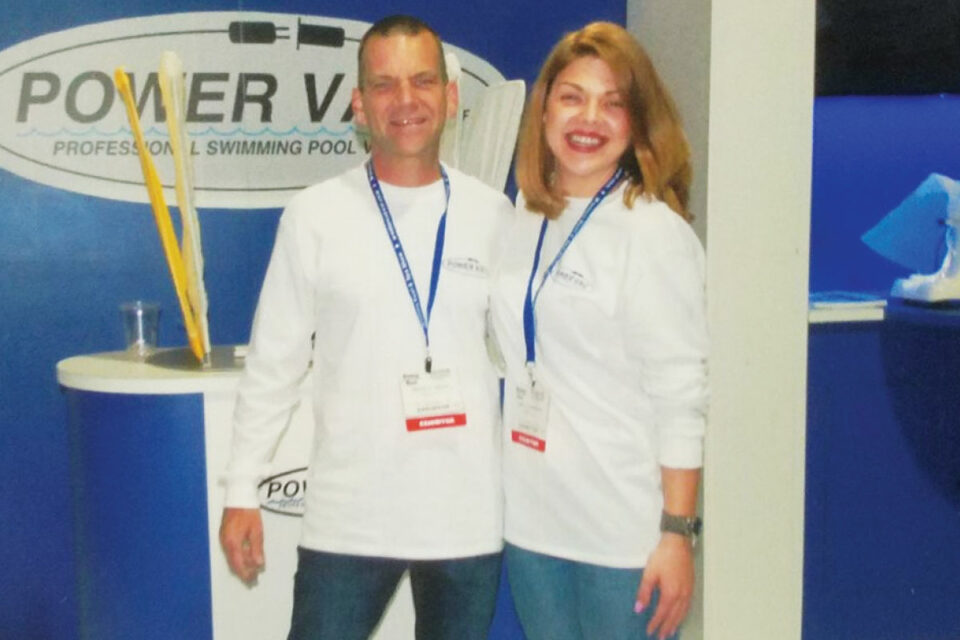
POWERVAC
Father and son reimagine a crucial pool tool
For three decades before inventing PowerVac, pool builder and servicer Dan Boeckler used the best products available and made each pool as perfect as possible. After constructing a pool, he would also service it — and at the time, vacuums were severely lacking.
In the 1960s, Dan started Custom Pools in Florida’s Fort Lauderdale and Broward counties. “There were no subdivisions,” his son Darron Boeckler recalls, “and not that many pools.” Dan had the idea for a better vacuum in the 1950s, but his vision far outpaced existing motor technology. The geographic area was exploding then, however, and Dan made out well, eventually building more than 5,000 pools.
“He drew plans, hung the steel, hung the wires, plastered,” Boeckler says of his father. “He about wore his shoulders out.” Needing a physical reprieve, Dan stopped building in 1975 and focused on service. His wife, Nancy, also worked at the family business, driving the truck and cleaning pools; their son Darron, then 18 and married with a child on the way, remembers those service routes in the 1980s and ’90s — water-propelled vacuum in tow — as arduous and frustrating.
“You’d have to find the customer’s garden hose and hook it up,” Boeckler recalls. “The dirt would get sucked into a bag. It would take 45 minutes for one person to run it back and forth to collect all the leaves. But it wouldn’t pick up rocks, bobby pins, sand. Only the light stuff.”
They desperately wanted a self-contained vac with a sealed motor that didn’t require customers’ equipment to operate it. (“Take the dirt with us and leave” was the working goal, Boeckler says.) By the mid-1990s when waterproofing technology had made strides, father and son were finally ready to take the first big crack at making their own vacuum. The first criteria was swivel wheels, which would allow the vacuum to go up and down pool walls instead of just back and forth.
What follows is a near-baffling series of learning curves that Darron and Dan managed to navigate together, drawing heavily from Dan’s decades of pool construction. Circa 1995, with just $200 seed money, they dived into learning the plastics business. They taught themselves how to make molds, their first fashioned from wood. They made their own oven. They started buying motors and developing a product in the shed behind Dan and Nancy’s house.
“When we made the first one,” Boeckler says, “we couldn’t wait to go to work the next day. Our first pool was done in about 15 minutes. It used to take us an hour and a half. We knew this was going to change everything.”
Tweaking it endlessly along the way, Dan and Darron used that first, single unit for about a year before making a second one and selling it to a friend. Dan sold Custom Pools in 2004 to focus exclusively on servicing pools with Darron and their PowerVac. Dan would live two more years — long enough to attend trade shows with his son to promote PowerVac and see the company succeed.
Thirteen years after Dan’s death, PowerVac still makes the entire product under one roof — only it’s not a shed, it’s a 6,000-square-foot warehouse. It has 18 employees, three of whom are Darron’s daughters. His mother, Nancy, is retired from the company.
“We never approached this as a get-rich scheme, but a long-lasting name brand,” Darron Boeckler says, “that thousands of companies could rely on to run their service routes, and that we could grow for our kids in the future.”

POOL CHASERS
The ‘brothers’ who broadcast together
When Greg Villafana and Tyler Rasmussen sold Brothers Pool Service in December 2018, they informed each customer via personal phone call. Another local service company would be taking over, they explained, and the longtime friends and business partners would focus on their industry podcast, Pool Chasers.
Ten months after the first episode aired, the list of potential guests and advertisers knocking on Pool Chasers’ door was getting long, but the young fathers felt stretched thin. There were 70-hour weeks, and, between meetings with the pool team, bids in the field and recording Pool Chasers, days that sometimes didn’t end until 2 or 3 a.m.
“The podcast was growing and there were a lot of inquiries,” Villafana says. “We were going to drop the ball [on the service company] at some point, and we really don’t like doing that. We could have bailed out and moved on quickly, but that was not our character,” he says of selling the pool service. Neither was leaving people behind: Together, they made the roughly 400 calls to existing customers to inform them of the change, and then hired Brothers’ service manager, Kyle Auld, to produce the podcast. Today, the podcast supports all three of their families.
Greg and Tyler were high school friends, but since Villafana lived with Rasmussen’s family for a time, they say they’re really more like brothers. Having relocated to Scottsdale, Arizona, in 2006 from California and working a series of jobs, by 2013 Rasmussen sought to start his own venture. Not one to cut corners, he was measured and patient before taking the leap into entrepreneurship. After joining a friend on a pool route, then working on motors and pumps in an industry warehouse, Rasmussen took Brothers Pool Service full time in January 2015. Less than a year later, he brought Villafana on as an employee. Originally, Rasmussen was going to start the business with his biological brother. The idea didn’t hold his brother’s interest, Rasmussen says, but the name stuck.
The idea for Pool Chasers was born in mid-2017 en route to Arizona’s Lake Havasu for the Brothers Pools annual company retreat. They’d stopped for gas and had been listening to The GaryVee Audio Experience, a popular podcast that focuses primarily on business and marketing.
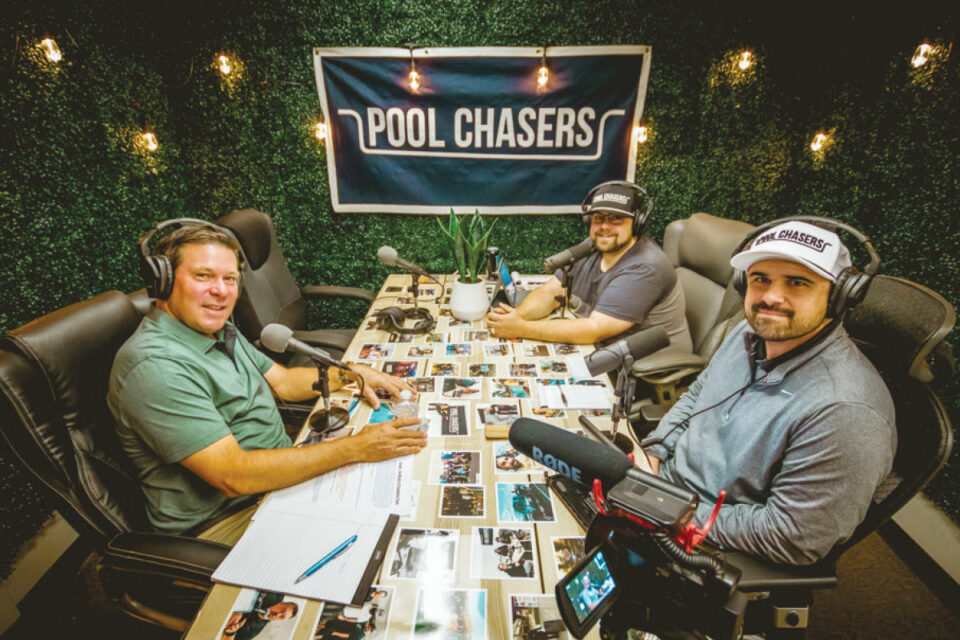
“We were talking about how motivational and inspiring it was,” Villafana says, when one of them blurted out, “We should totally do something like this for the pool industry.” He and Rasmussen reasoned that — for as many hours as pool industry workers spend driving or in the field — a tightly produced, information-packed podcast could be time well spent.
“And we don’t half-ass anything,” Villafana says, “so if we’re both on board, it’s going to be something big.” Rasmussen says they were so excited they had trouble sleeping that night and many nights after.
Not wanting to rush into anything, the duo dived into research. They listened to their favorite podcasts and found out what equipment was being used, from microphones and mixer boards to editing software. They bought a lot of equipment, an iMac and rented a studio in a separate building. (“It was not in the budget,” Villafana says.)
That first year, the two handled all the editing, created a website, built up the brand, set up the studio and ran social media. When they sold the service business, they hired Auld, who had a background in music production. “We didn’t want to lose him,” Rasmussen says, “so we brought him on as the editor and producer.” The scheduling app Jobber, of which Brothers Pool Service is a user and fan, was the podcast’s first sponsor, secured before Pool Chasers even released its first episode. The show also nods to those that came before it: In its 33rd episode, the Pool Chasers interviewed Brett Gereau, who was once the host of Pool Business Academy, a short-lived pool industry podcast that was nevertheless the first of its kind.
Rasmussen and Villafana have recorded and released about 60 episodes so far. It takes six to eight hours to edit each one, they say, and most run one to two hours. Both are working more manageable 50-hour weeks now on average, with the singular focus on making a top-quality product. “We take it very seriously,” Rasmussen says. “You can huck something out there, but we don’t do that.”
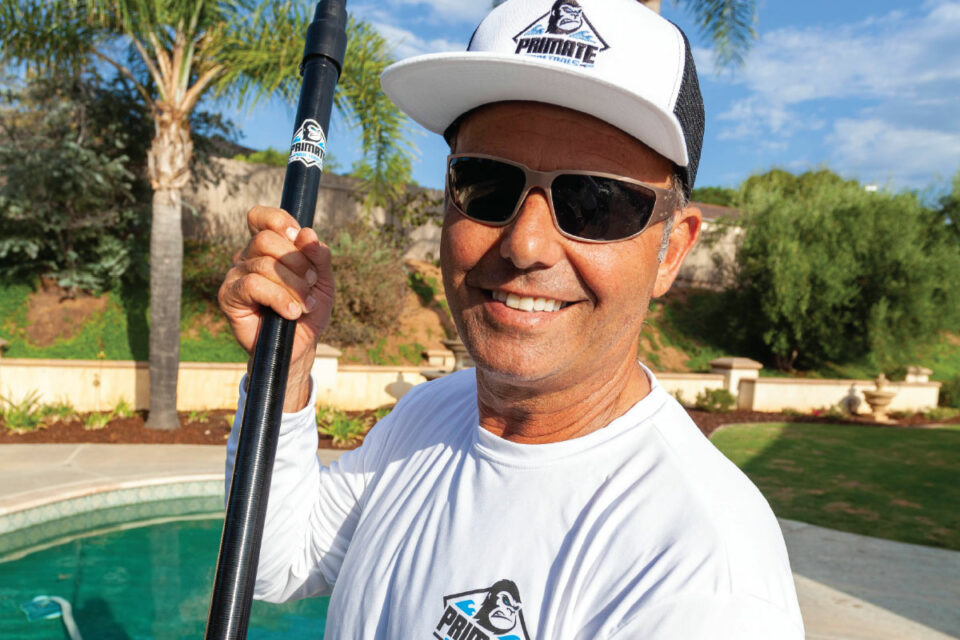
PRIMATE POOL TOOLS
Industry veteran lightens the load for pool servicers
About half a decade ago, a spur-of-the-moment remark to a friend led Joe DiAnna to redesign one of the most commonly used items in the pool industry: the service pole. His close friend was employed making carbon-fiber tubing for the military, and while DiAnna doesn’t recall what exactly led him to ask the question, it would change his business life forever.
“We were just talking one day and I said, ‘Can you make me a telescoping pole for my pool service?’ If we can develop something high quality,” he explained, “we can probably market it to the pool industry.”
A California native, DiAnna has spent 30 years in the pool industry, having started servicing residential pools in San Diego with the family business, J. DiAnna Pool Service and Repair. Like everyone else then, DiAnna was using an aluminum telescoping extension pole to clean pools. “It took about 12 actions to extend your pole, and lock it into place or collapse it,” he says. “I was most frustrated with the locking mechanism — and the fact that the gauge of the aluminum seemed to be getting thinner.”
By 2006, DiAnna moved his service venture into the commercial segment — everything but remodels, he says. A decade later, another change: He’d be CEO of Primate Pool Tools and the inventor of the industry’s first carbon-fiber service pole — and as he says it, “getting mobbed” at trade shows. Not that he minds.
“It’s corner to corner in our booth,” he says. “We love that the characteristics of the carbon fiber have been enthusiastically accepted by pool professionals.” He says it’s especially rewarding to hear from longtime pool servicers around his age.
“Older guys like me, they’re getting arthritis,” DiAnna says, “and [with the Primate pole] they’re telling me their hands don’t hurt anymore, their cervical injury doesn’t hurt them anymore. [The pole] doesn’t sag and give like aluminum, and it changes their day to carry around half the weight.” Carbon fiber is known to have the strength of steel but with the weight of aluminum; it does not transfer cold and hot temperatures like aluminum and does not slip when wet.
DiAnna used the pole himself for two years before he began to market and sell it. Upon releasing a few prototypes to colleagues, however, he soon found out many pool techs are harder on their equipment than he is — so the first order of business was to turn the pole around: Now, when using a Primate pole, “you’re not holding onto the smallest piece, you’re holding onto the largest,” DiAnna explains. “We built durability to the pool end.” There was also great focus on the design of the lever lock, ensuring it would slide in and out smoothly. DiAnna says the Primate pole is flexible but doesn’t bend or warp. “That means less stress for you and less trips to replace your pole,” he says. “We are continuously improving it, even up to this day.”
DiAnna says the positive industry response to his product has led competitors to try to strengthen their poles, but he says that process “just makes them heavier.”
His three-part pole, the PX6, weighs in at 2 pounds and 4 ounces. It starts at 6 feet and can extend to 15.5 feet. There is also a PX2 and a PX3. The poles attach to all hand tools and a vacuum. “Ours is half the weight of any comparable three-part pole out there,” he says, “and three to five times stronger than aluminum poles.” Its newest product is a two-part pole, which Primate released in midsummer.
Primate Pool Tools also offers 6-foot and 8-foot extensions. They snap in like a tool into the tool end, which can be used in commercial pools and disappearing-edge pools, and that’s “a unique product no one else has,” DiAnna says. The extensions fit into most 1.4-inch telescoping aluminum poles.
Unlike others who opted to hand over their service business, J. DiAnna Pool Service and Repair is still in operation. DiAnna admits, however, that running two businesses is extremely difficult. His saving grace, he says, is family by his side: DiAnna’s sons, Joseph and Benjamin, work on digital and social media for both companies, and his wife, Rosalie, is CFO for both companies. “Everyone in my family wears more than one hat while we depend on each other’s strengths,” DiAnna says. The service company has four technicians, and DiAnna himself is still out in the field daily. The friend who makes the carbon-fiber tubing still works for DiAnna at Primate, but DiAnna declined to give his name, citing privacy concerns.
DiAnna estimates Primate has moved 1,500 poles to date among its three models and two extensions, which are handmade in the United States. His goal is 1,000 units a year. In the meantime, “I’m helping somebody’s workday,” he says, “and that feels good.”

